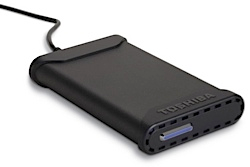

Later versions of inductive heads included Metal In Gap (MIG) heads and thin film heads. Early HDDs used an electromagnet both to magnetise the region and to then read its magnetic field by using electromagnetic induction. The domains rotate sideways to a halfway position that weakens the readability of the domain and relieves the magnetic stresses.Ī write head magnetises a region by generating a strong local magnetic field, and a read head detects the magnetisation of the regions. Magnetic domains written too close together in a weakly magnetisable material will degrade over time due to rotation of the magnetic moment of one or more domains to cancel out these forces. įor reliable storage of data, the recording material needs to resist self-demagnetisation, which occurs when the magnetic domains repel each other. Older hard disk drives used iron(III) oxide (Fe 2O 3) as the magnetic material, but current disks use a cobalt-based alloy. In older hard disk drive (HDD) designs the regions were oriented horizontally and parallel to the disk surface, but beginning about 2005, the orientation was changed to perpendicular to allow for closer magnetic domain spacing. Each magnetic region in total forms a magnetic dipole which generates a magnetic field. Magnetic grains are typically 10 nm in size and each form a single true magnetic domain. Due to the polycrystalline nature of the magnetic material, each of these magnetic regions is composed of a few hundred magnetic grains. The magnetic surface is conceptually divided into many small sub- micrometer-sized magnetic regions, referred to as magnetic domains, (although these are not magnetic domains in a rigorous physical sense), each of which has a mostly uniform magnetisation. There are two magnetic polarities, each of which is used to represent either 0 or 1. The read-and-write head is used to detect and modify the magnetisation of the material immediately under it. Information is written to and read from the storage medium as it moves past devices called read-and-write heads that operate very close (often tens of nanometers) over the magnetic surface. Hard drives use magnetic memory to store giga- and terabytes of data in computers.

Unlike modern computers, magnetic tape was also often used for secondary storage. In old computers, magnetic storage was also used for primary storage in a form of magnetic drum, or core memory, core rope memory, thin film memory, twistor memory or bubble memory.

Computers and now most audio and video magnetic storage devices record digital data. Early magnetic storage devices were designed to record analog audio signals. In 1928, Fritz Pfleumer developed the first magnetic tape recorder. Poulsen's device recorded a signal on a wire wrapped around a drum.

The first publicly demonstrated (Paris Exposition of 1900) magnetic recorder was invented by Valdemar Poulsen in 1898. Smith had previously filed a patent in September, 1878 but found no opportunity to pursue the idea as his business was machine tools. Magnetic storage in the form of wire recording-audio recording on a wire-was publicized by Oberlin Smith in the Sissue of Electrical World.


 0 kommentar(er)
0 kommentar(er)
